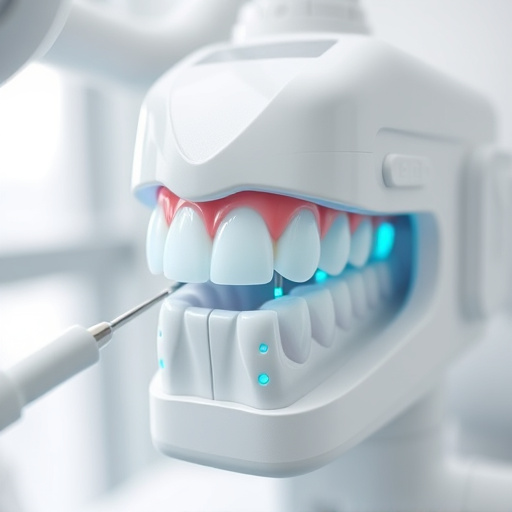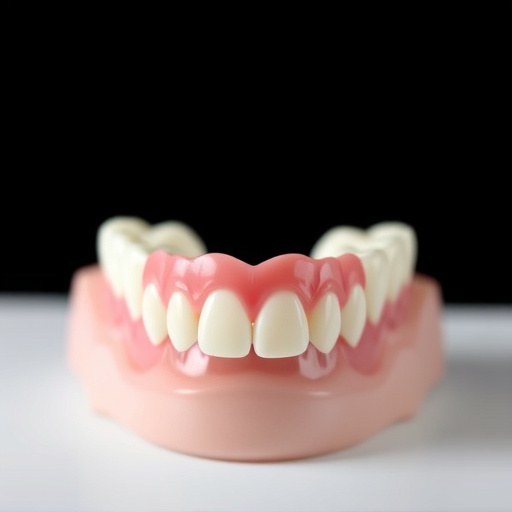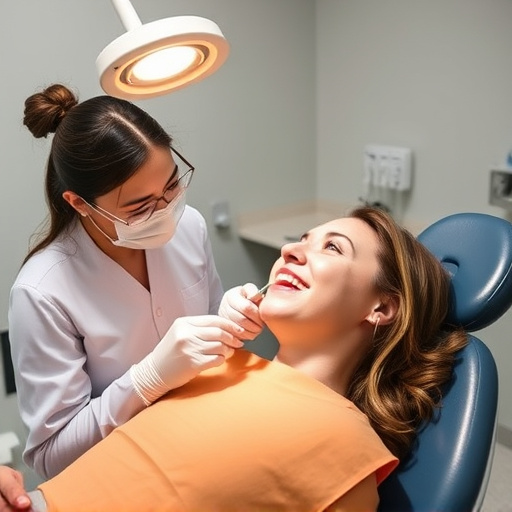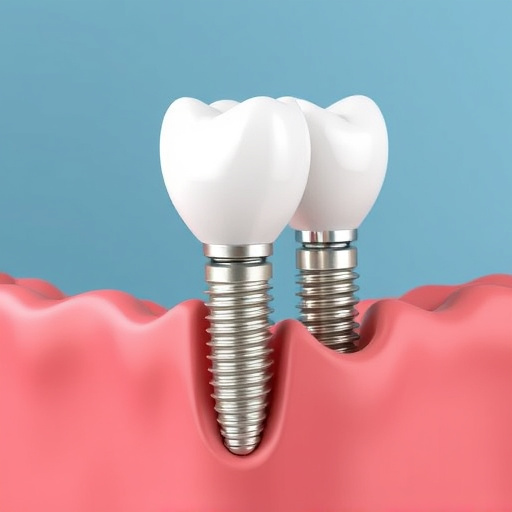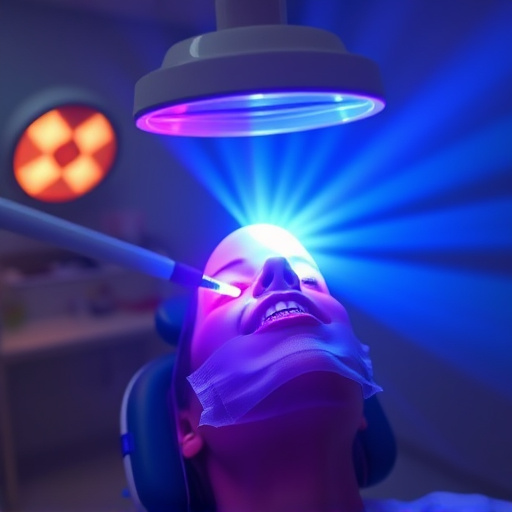Wisdom teeth, often fully developing in late adolescence or early adulthood, can cause issues due to limited space, leading to impaction, pain, and damage. Regular dental exams are crucial for monitoring their growth. Removal is recommended if there's evidence of impactions, inflammation, or structural problems, with early extraction preferred. The procedure involves a consultation, anesthesia, extraction, and post-op care including ice packs, soft foods, and good oral hygiene to manage discomfort and swelling. Proper post-care is vital for recovery, and children’s dentistry practices offer guidance on wisdom teeth removal and aftercare for younger individuals.
“Considering wisdom teeth removal? This comprehensive guide breaks down the entire process, from understanding impacted teeth to post-operative care. Wisdom teeth, often causing pain or infection, might require extraction. Here’s what you need to know: we explore when and why removal is crucial, detail the step-by-step procedure, and offer expert tips for post-removal recovery. Learn how to navigate this common dental procedure with ease and confidence.”
- Understanding Wisdom Teeth: When and Why Removal is Necessary
- The Step-by-Step Removal Process: From Consultation to Recovery
- Post-Removal Care: What to Expect and How to Manage Potential Complications
Understanding Wisdom Teeth: When and Why Removal is Necessary
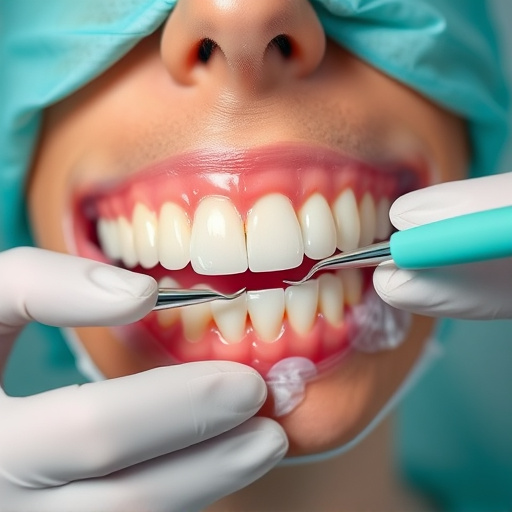
Wisdom teeth, also known as third molars, are the last set of teeth to emerge, often appearing in late adolescence or early adulthood. While some individuals may have them grow in properly and contribute to a healthy mouth, many wisdom teeth don’t have enough room to erupt fully or at all. This can lead to various issues, such as impaction, pain, infection, damage to adjacent teeth, and even cysts. Regular dental exams are crucial for monitoring the development of wisdom teeth. If a dentist observes potential problems during routine oral exams, they may recommend removing these teeth before complications arise.
Wisdom teeth removal is often necessary when there’s evidence of impaction, inflammation, or damage to nearby structures. In some cases, dentists might suggest waiting and observing if the wisdom teeth are fully erupted and not causing any distress. However, for many patients, early removal (before the roots fully develop) is the best course of action to prevent future dental issues. This procedure, known as wisdom teeth extraction, can be performed under local or general anesthesia, depending on the complexity of the case, and is often a straightforward process when done prophylactically during younger years, especially in family dentistry settings.
The Step-by-Step Removal Process: From Consultation to Recovery
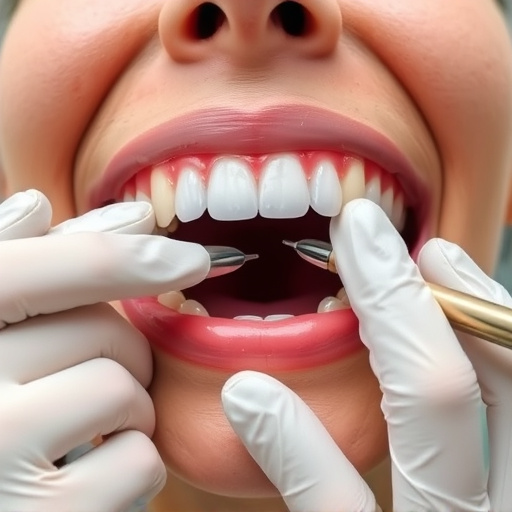
The process of wisdom teeth removal is a meticulous procedure that begins with an initial consultation. During this meeting, your dentist will thoroughly examine your mouth, reviewing X-rays to assess the position and health of your wisdom teeth. They’ll discuss any concerns, potential risks, and the expected recovery period. If extraction is recommended, the dentist will outline the step-by-step process.
On the day of the procedure, you’ll be sedated, either through local anesthesia or general anesthesia, depending on the complexity. The dentist will make a small incision in your gum to access the tooth and carefully extract it, ensuring proper hemostasis (stoppage of bleeding) afterward. Post-operatively, it’s crucial to follow the dentist’s aftercare instructions, including managing pain, maintaining oral hygiene, and restricting strenuous activities for a comfortable recovery period. Regular routine oral exams and children’s dentistry practices can help identify potential issues early on, making future procedures less complex.
Post-Removal Care: What to Expect and How to Manage Potential Complications
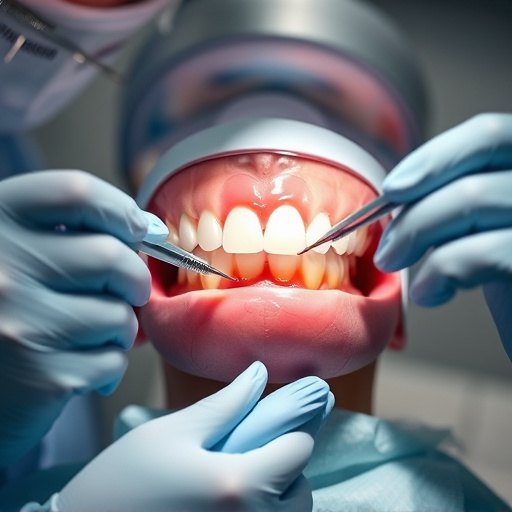
After wisdom teeth removal, proper post-care is essential for a smooth recovery. It’s normal to experience some swelling and discomfort in the first few days, so applying ice packs can help reduce inflammation. You might also notice blood in your saliva, which is common but should subside within a couple of days. Staying hydrated by drinking plenty of water and avoiding strenuous activities will aid in healing. Eating soft foods like yogurt, soups, and mashed potatoes for the first 24 hours is recommended to prevent disturbing the extraction sites.
Potential complications are rare but can include infection, bleeding that persists beyond a few days, or dry socket (a condition where the blood clot at the extraction site dries up). If you experience severe pain, fever, or notice any signs of infection like pus around the wound, contact your dentist or visit a family dentistry clinic immediately. They may prescribe medication to manage pain and prevent infections. While healing, maintain good oral hygiene by gently cleaning your mouth, and be sure to follow your dentist’s advice regarding follow-up visits for x-rays and checks. Children’s dentistry practices often provide guidance on wisdom teeth removal and post-care for younger patients, ensuring they receive the best care in a comfortable environment.
Wisdom teeth removal is a common procedure that can significantly improve oral health. By understanding when extraction is necessary, following the step-by-step process outlined in this article, and managing post-removal care appropriately, patients can ensure a smooth transition to a healthier smile. Remember, prompt post-operative care is crucial to mitigating potential complications and promoting faster recovery. Wisdom teeth removal is not just about addressing current issues; it’s an investment in long-term oral health and peace of mind.
